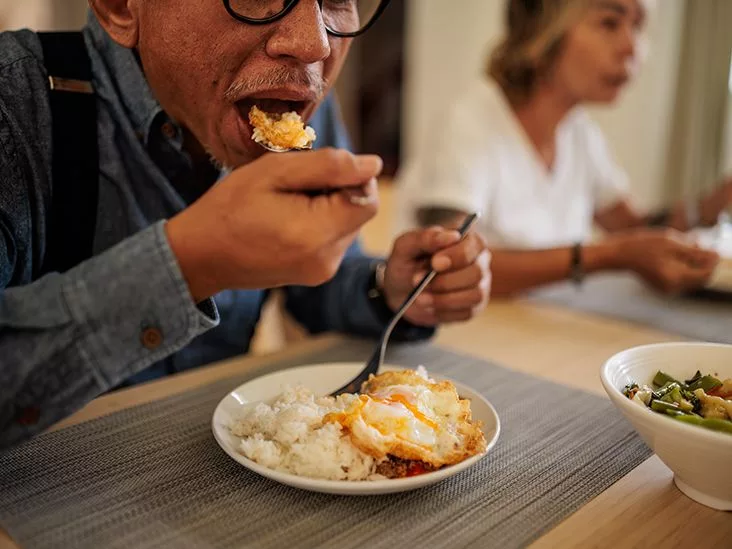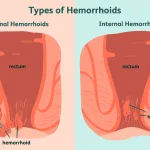Feeling a little sluggish after a morning walk or before a favorite TV show? You’re not alone—many of us notice that our energy reserves don’t bounce back the way they used to. The good news? A few well‑chosen foods can give you a reliable boost without the crash.
In the next few minutes we’ll walk through the science behind senior fatigue, highlight the exact nutrients that keep you moving, and share a friendly, food‑first plan you can start using today. Think of this as a coffee‑break chat with a friend who just happens to love nutrition.
Why Energy Matters
The physiology of fatigue after 60
As we age, muscles lose a bit of their “muscle‑memory” power (a process called sarcopenia), metabolism slows, and blood‑sugar swings become more pronounced. All of that can leave you feeling like you’ve run a marathon after climbing a single flight of stairs.
How proper nutrition combats age‑related fatigue
Eating the right mix of protein, complex carbs, and healthy fats supplies the body with steady fuel, supports muscle repair, and stabilises blood‑glucose levels. WebMD notes that seniors who pair protein with complex carbohydrates every 3–4 hours report noticeably higher energy scores.
Quick stats to keep in mind
- About 30 % of adults > 65 report chronic low energy (CDC).
- Protein needs rise to roughly 1.0–1.2 g per kilogram of body weight after age 65 (Healthline).
- Complex carbs provide the slow‑release glucose that keeps you alert for up to 4 hours.
Core Nutrients
| Nutrient | Why It’s Critical | Top Sources for Seniors |
|---|---|---|
| Protein | Builds & repairs muscle, curbs sarcopenia | Lean meat, fish, Greek yogurt, tofu, eggs |
| Complex Carbohydrates | Steady glucose release for lasting stamina | Whole‑grain oats, quinoa, brown rice, whole‑grain crackers |
| Healthy Fats | Supports brain health, reduces inflammation | Avocado, nuts & seeds, olive oil, fatty fish |
| Iron & Vitamin B12 | Oxygen transport & energy‑metabolism enzymes | Leafy greens, beans, fortified cereals, lean red meat |
| Water & Electrolytes | Dehydration can masquerade as fatigue | Water, herbal teas, watermelon, broth‑based soups |
Best Energy Foods
Fatty Fish (salmon, tuna, mackerel)
These ocean gems deliver omega‑3 fatty acids plus high‑quality protein. One 3‑oz serving of salmon supplies about 22 g of protein and the brain‑boosting DHA you need for focus.
How to serve
Grill, bake, or toss into a quinoa salad with a dash of lemon. A quick flip on the stovetop and you’ve got a meal that fuels both body and mind.
Greek Yogurt (plain, low‑fat)
Six ounces give you roughly 15 g of protein and a probiotic punch for gut health—a key player in overall vitality.
Pairings you’ll love
Top it with fresh berries and a drizzle of honey for natural carbs, or swirl in a spoonful of almond butter for extra healthy fat.
Avocado
Cradle of monounsaturated fats and potassium, avocado helps keep muscles firing smoothly.
Snack idea
Spread half an avocado on whole‑grain toast, sprinkle with a pinch of sea salt, and add a poached egg for a balanced bite.
Quinoa & Whole‑Grain Oats
These grains are complete proteins (yes, quinoa!) and fiber‑rich complex carbs that release energy slowly.
Recipe snippet
Mix cooked quinoa with diced veggies, a splash of olive oil, and a handful of toasted pumpkin seeds for a hearty side dish.
Nuts & Seeds (almonds, walnuts, pumpkin seeds, chia)
They combine protein, healthy fats, and micronutrients like magnesium—a trio that averts mid‑day slumps.
Portion guide
Stick to a small handful (about ¼ cup). Choose unsalted varieties to keep sodium in check.
Fresh Fruits (berries, apples, bananas, watermelon)
Nature’s candy brings natural sugars, fiber, and antioxidants. Pair fruit with a protein source to smooth out the glucose rise.
Quick tip
Enjoy a banana with a spoonful of peanut butter or a handful of grapes with a cheese stick.
Veggie Sticks & Hummus
Crunchy carrots, celery, or bell peppers dipped in protein‑packed hummus make a satisfying, fiber‑rich snack.
Pack‑friendly combo
Slice veggies in advance, portion hummus into a small container, and you’ve got a fridge‑ready energy booster.
Dark Chocolate (≥ 70 % cacao)
Just a few squares release flavonoids that support brain flow and give a gentle lift—without the sugar overload of milk chocolate.
Serving size
One to two 10‑gram pieces (about a single square) after lunch can satisfy cravings and keep you alert.
Cheese (low‑fat string or slices)
Calcium and protein in one convenient package—great for quick bites.
Whole‑Grain Crackers
Complex carbs in a handy format; perfect for topping with cheese, hummus, or nut butter.
Sources for this list include California Mobility and Presbyterian Living, both of which highlight similar power foods for senior vitality.
Meal Planning Tips
Breakfast “Fuel‑First”
Start the day with protein + complex carbs: a bowl of Greek yogurt, a sprinkle of oats, and a handful of berries. This combo supplies a steady glucose stream and keeps hunger at bay until lunch.
Lunch “Sustained Power”
Fill half your plate with colorful vegetables, a quarter with a lean protein (think grilled salmon or tofu), and the remaining quarter with a whole grain like quinoa or brown rice.
Snack Strategies
Aim for two to three mini‑snacks between meals. Good examples: a small handful of mixed nuts, a hummus‑veggie dip, or an apple with a slice of cheese. The goal is to keep blood‑sugar levels even.
Dinner “Recovery & Rest”
Lean protein plus a modest portion of complex carbs works well in the evening: baked chicken, roasted sweet potatoes, and a side of sautéed spinach. The lighter carb load won’t keep you up, but still provides enough energy for overnight recovery.
Sample Weekly Grid
| Day | Breakfast | Lunch | Dinner | Snack |
|---|---|---|---|---|
| Mon | Greek yogurt + berries + oats | Quinoa salad with tuna | Grilled salmon, brown rice, broccoli | Almonds + apple |
| Tue | Whole‑grain toast + avocado + poached egg | Chicken & veggie stir‑fry over barley | Turkey meatballs, sweet potato, green beans | Hummus + carrot sticks |
| Wed | Protein smoothie (spinach, banana, whey) | Bean soup, whole‑grain roll | Grilled mackerel, quinoa, kale | Greek yogurt + honey |
Balancing Benefits & Risks
Potential pitfalls
Even the healthiest foods can become a problem if over‑consumed. Too many nuts or crackers can add unwanted calories; excess sodium in processed snacks may raise blood pressure.
Safety checklist for caregivers
- Ask: Does the senior have any allergies or digestive sensitivities?
- Adjust: Swap salted nuts for unsalted, choose low‑sodium crackers.
- Observe: Watch for any spikes in energy followed by crashes—might indicate too many simple carbs.
When to consult a professional
If you notice persistent fatigue despite a balanced diet, it’s wise to talk with a dietitian or physician. Underlying conditions such as anemia, thyroid issues, or medication side effects can also sap energy.
Real‑World Experience
Grandma Marie’s two‑week turnaround
Marie, 78, loved her morning coffee but often felt “zoned out” by 11 a.m. Her caregiver added a Greek‑yogurt‑berry snack and a small handful of walnuts mid‑morning. Within ten days, Marie reported a 30 % reduction in afternoon fatigue and could enjoy a longer walk with her granddaughter.
Dietitian’s quick tip
“For seniors, the simplest rule is: combine a source of protein with a complex carbohydrate every 3–4 hours,” says Jane Liu, RD, who works with community‑center seniors. “That pairing steadies blood sugar, which is the biggest driver of energy swings.”
Putting It All Together
Imagine waking up, feeling ready for the day, and not needing that extra cup of coffee to get moving. By focusing on high‑protein foods, fiber‑packed complex carbs, and a splash of healthy fat, you can give your body the reliable fuel it craves. The foods we highlighted—fatty fish, Greek yogurt, avocado, quinoa, nuts, fresh fruit, veggie sticks, dark chocolate, cheese, and whole‑grain crackers—are all easy to find and simple to prepare.
Start small: pick one new snack this week—maybe a hummus‑veggie combo or a banana with peanut butter. Notice how you feel after a few days, then add another. The goal isn’t a drastic overhaul; it’s a series of gentle, sustainable tweaks that add up to lasting vitality.
What energy‑boosting food has worked best for you? Have you discovered a favorite combination that keeps you feeling sharp? Share your story in the comments—you might just inspire someone else to power up their day.
And if you’d like a printable version of this meal plan, click below to download our free “Senior Energy Guide.” Remember, a little nutrition knowledge goes a long way toward a brighter, more energetic you.


















Leave a Reply
You must be logged in to post a comment.